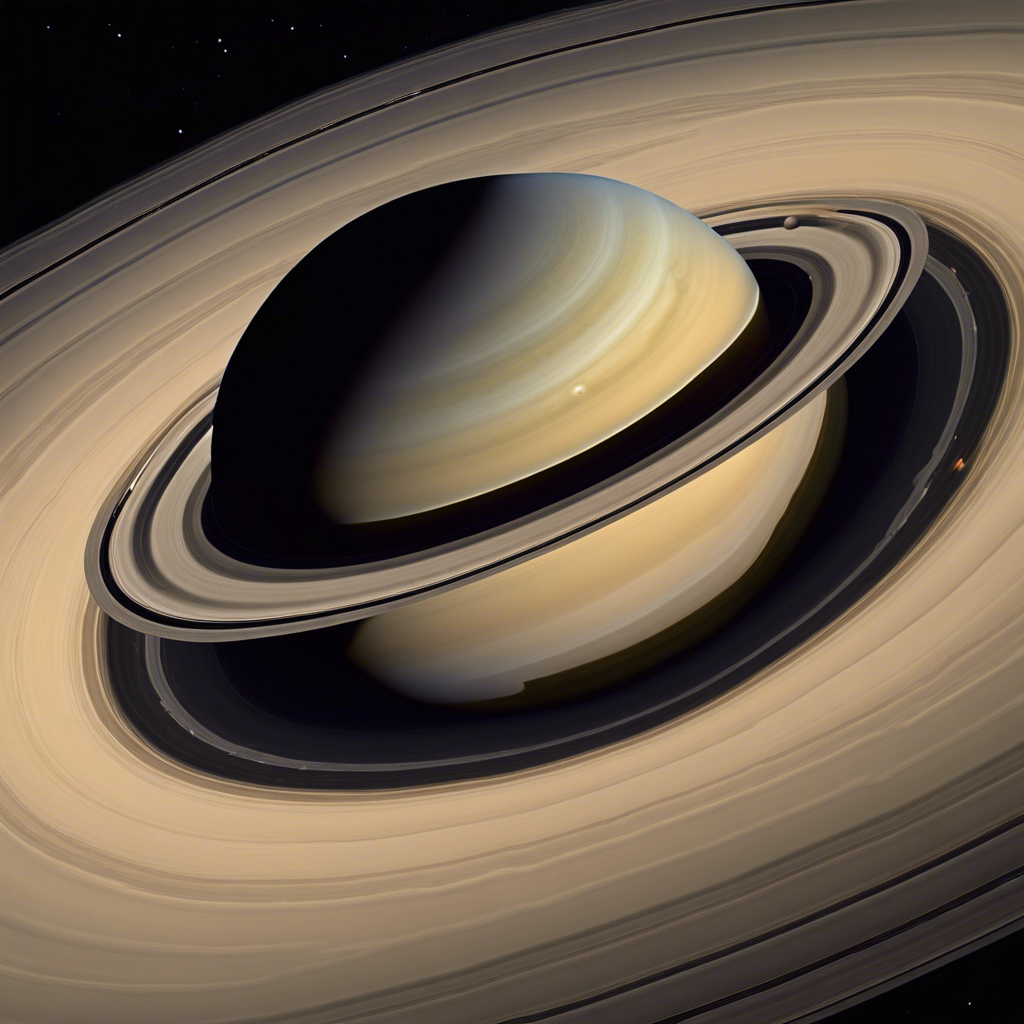Cassini’s Top 10 Images of 2015: A Journey Through Saturn’s Enigmatic Beauty

A visual odyssey capturing the breathtaking wonders of Saturn as seen through the lens of the Cassini spacecraft
In the vast expanse of our solar system, one celestial body has captivated the imaginations of scientists and stargazers alike: Saturn. With its majestic rings and enigmatic moons, this gas giant has long been a source of fascination. And for over a decade, the Cassini spacecraft has been our eyes and ears, providing us with stunning images and invaluable scientific data. As we embark on a new year, let us take a moment to reflect on the top 10 images captured by Cassini in 2015, offering us a glimpse into the awe-inspiring beauty of Saturn and its enthralling celestial dance.
1: Enceladus: A Geyser of Possibilities
Cassini’s close encounter with Enceladus, one of Saturn’s icy moons, unveiled a remarkable sight: towering geysers erupting from its south pole. These plumes, composed of water vapor and icy particles, hint at the possibility of a subsurface ocean and potential for life beyond Earth.
2: Saturn’s Hexagon: A Bizarre Atmospheric Phenomenon
One of the most perplexing features of Saturn is its hexagonal-shaped storm at its north pole. Cassini’s images of this atmospheric oddity provide a mesmerizing view of the swirling clouds within the hexagon, offering scientists a glimpse into the complex dynamics of Saturn’s atmosphere.
3: Titan: A World of Mysteries
Saturn’s largest moon, Titan, is a world shrouded in mystery. Cassini’s images of Titan’s hazy atmosphere and hydrocarbon lakes have revealed a landscape reminiscent of Earth, yet alien in its composition. These captivating images have fueled scientific curiosity, raising questions about the potential for extraterrestrial life.
4: Dione: A Moon of Contrasts
Cassini’s flyby of Dione, another of Saturn’s moons, showcased the stark contrast between its heavily cratered surface and the smooth, icy plains known as “wispy terrain.” These images provided scientists with valuable insights into the geological processes shaping Dione’s surface.
5: Saturn’s Rings: A Symphony of Colors
No discussion of Saturn would be complete without mentioning its iconic rings. Cassini’s images of these celestial rings, composed of countless icy particles, reveal a stunning array of colors and intricate structures. From the braided F ring to the delicate ringlets of the A ring, these images offer a visual feast for the eyes.
6: Hyperion: A Moon of Sponge-like Terrain
Hyperion, Saturn’s irregularly shaped moon, is a world like no other. Cassini’s close-up images of Hyperion’s pockmarked surface resemble a sponge, with its porous texture and jagged craters. These images have provided scientists with valuable insights into the moon’s unique geological history.
7: Rhea: A Moon with Ancient Scars
Cassini’s images of Rhea, Saturn’s second-largest moon, showcase a surface marred by ancient impact craters. These scars, some as large as 30 kilometers in diameter, tell the story of Rhea’s tumultuous past and provide clues about the moon’s formation and evolution.
8: Iapetus: A Moon with a Two-Tone Personality
Iapetus, one of Saturn’s moons, presents a striking contrast between its dark and light hemispheres. Cassini’s images of this enigmatic moon reveal a stark divide, with one side covered in dark material and the other side gleaming with bright ice. The origin of this dichotomy remains a puzzle that scientists continue to unravel.
9: Janus and Epimetheus: Dancing Moons
Cassini’s images of Janus and Epimetheus, two of Saturn’s smaller moons, captured a rare celestial dance. These moons, locked in a gravitational tug-of-war, swap orbits every four years, creating a mesmerizing spectacle as they pass each other in their cosmic waltz.
10: The Pale Blue Dot: Earth as Seen from Saturn
As Cassini turned its gaze back towards Earth, it captured a poignant image of our home planet as a tiny pale blue dot amidst the vastness of space. This humbling view serves as a reminder of our place in the universe and the importance of exploring and protecting our celestial neighborhood.
Conclusion:
Through a decade-long journey, the Cassini spacecraft has unveiled the wonders of Saturn and its captivating moons, leaving us in awe of the beauty and complexity of our cosmic neighbor. The top 10 images of 2015 serve as a testament to the power of exploration and the boundless mysteries that await us in the depths of space. As we look forward to the future, we eagerly anticipate the discoveries that Cassini will continue to unveil, expanding our understanding of Saturn and the wonders that lie beyond.










